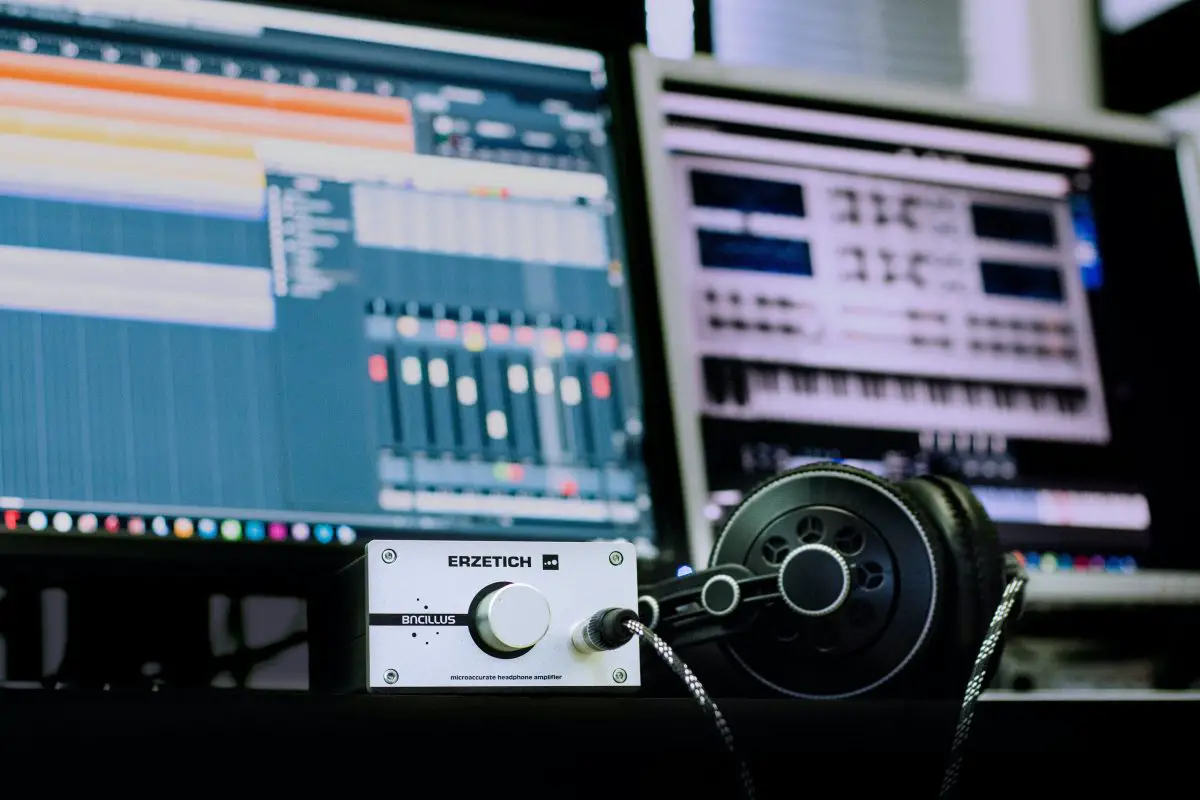Are you ready to add mesmerizing harmonies and unleash the power of sonic manipulation? Discover the captivating world of harmonizers and explore how they can transform your music with their pitch-shifting wizardry. Get ready to dive in and create a symphony of sound like never before.
What is a harmonizer? A harmonizer is a versatile audio processing tool that alters the pitch of a sound source, allowing you to create harmonies and complex textures by combining pitch-shifted versions with the original audio. It opens up a realm of possibilities for musicians and producers, offering a range of creative effects and enhancements that can take your compositions to new heights.
What is a harmonizer, and how does it work?
A harmonizer is an audio processing tool that allows you to create harmonies by shifting the pitch of a sound source. Imagine you have a vocal line, and you want to add a beautiful harmony to it. The harmonizer takes the vocals, pitches them up or down, and then blends them with the original un-pitched audio, resulting in a mesmerizing two-note harmony. It’s like having your virtual backup singer!

Now, what happens when you have multiple vocals running into the harmonizer or when you stack pitch-shifted vocals on top of each other? Brace yourself for complex textures that can transport your music to another dimension. By manipulating the pitch and layering vocals, you can create rich and intricate harmonies that elevate your compositions. Think of it as adding layers of sonic goodness to your tracks!
Additional processing features for huge harmonies
Well-designed harmonizers come equipped with additional processing features to help you achieve those massive harmonies and keep everything in tune and in time. One of these features is time-stretching, which allows you to adjust the timing of the harmonized vocals while maintaining their pitch. It’s like having a virtual conductor to ensure perfect synchronization. And hey, you can even tweak the pitch ratio and apply anti-feedback to fine-tune your harmonies and keep them sounding pristine.
Not just for vocal harmonies
Now, here’s a little secret: while harmonizers are widely used to create vocal part harmonies, they are not limited to vocals alone. Harmonizers can be your secret weapon for crafting unique and captivating effects on various instruments. You can spread guitars, fatten up snares, or even apply subtle organic de-tuning to synths. The possibilities are endless, and the only limit is your imagination. Remember, experimentation is key!

AKAI Professional MPK Mini MK3

AKAI Professional MPK Mini MK3
What are the other uses of harmonizers?
So you thought harmonizers were only for creating vocal harmonies? Well, think again! Harmonizers are versatile tools that go way beyond just enhancing vocals. Let’s dive into some exciting ways you can use harmonizers in your music:
1. Spreading guitars
Want to create a wider and more immersive guitar sound? Use a harmonizer to spread the guitar’s pitch across the stereo field, giving it a big and captivating presence.
2. Fattening snares
Need your snare drum to cut through the mix with extra impact? Add a harmonizer to fatten up the snare by layering pitch-shifted versions, creating a larger-than-life sound.
3. Organic de-tuning of synths
Looking to add a touch of warmth and character to your synth lines? Apply subtle organic de-tuning using a harmonizer, giving your synths a natural and unique feel.
4. Adding delays to vocals
Want to add some rhythmic interest to your vocal tracks? Use a harmonizer to introduce slap-back delays or other creative delays, giving your vocals a sense of space and texture.
This data table highlights various applications of harmonizers in the realm of music production, showcasing the versatility and creative possibilities they offer. Take a look at the table below for a summary of these applications:
| Application | Description |
|---|---|
| Vocal Harmonies | Create lush harmonies by shifting the pitch of vocal lines. |
| Instrument Widening | Spread the pitch of instruments across the stereo field for a wider sound. |
| Sound Texturing | Layer pitch-shifted sounds to create complex and captivating textures. |
| Time-Stretching | Adjust the timing of harmonized sounds while maintaining pitch integrity. |
What is the Eventide H910 Harmonizer?
We can’t forget to mention one of the most revered harmonizers of all time: the Eventide H910 Harmonizer. It’s a true legend in the world of audio effects and has shaped countless hit records. Let’s dive into what makes the H910 so special:
1. World’s first digital effects processor
The H910 was the pioneer, the trailblazer, and the first digital effects processor ever created. Its groundbreaking combinations of pitch shifting, modulation, and delay have shaped the sounds of countless hit records. It’s no wonder artists of all genres have fallen in love with its sonic capabilities.
2. Faithful recreation in plugin form
Eventide has taken the iconic H910 and brought it into the digital realm with their H910 Harmonizer plugin. This means you can harness the power of this legendary hardware right within your favorite digital audio workstation (DAW). It’s like having a piece of music history at your fingertips, ready to elevate your productions to new heights.
You can combine, layer, and experiment with different harmonization settings to achieve truly unique and captivating sounds.
3. Parallel processing and sonic mangling
The H910 plugin takes things a step further by allowing you to run two harmonizers in parallel. This opens up a world of possibilities for sonic exploration and manipulation. You can combine, layer, and experiment with different harmonization settings to achieve truly unique and captivating sounds.
With the Eventide H910 Harmonizer plugin at your disposal, you can explore a multitude of creative applications:
- Create specific musical intervals and harmonies, adding depth and richness to your compositions. Spread those guitars wide, making them soar across the stereo field.
- Fatten up snares and make them hit with impact.
- Add subtle delays or slap-back effects to vocals, giving them a touch of vintage charm.
- If you’re feeling adventurous, you can crank up the settings and unleash unheard-of mechanical sounds and drone effects. It’s a playground for sonic explorers, and the H910 is your trusted companion.
To ensure you make the most of your harmonizer, here’s a small table of dos and don’ts to guide you:
| Dos | Don’ts |
|---|---|
| Experiment with different harmonization settings | Overuse harmonization, losing the original character of the sound |
| Layer pitch-shifted vocals thoughtfully for added depth | Stack too many harmonies, resulting in a cluttered and muddy mix |
| Use harmonizers to enhance the musicality of your tracks | Rely solely on harmonization as a crutch for weak melodies |
| Explore creative effects like spreading, fattening, and de-tuning | Overwhelm the mix with excessive and exaggerated harmonization |
If you have a home recording studio or are involved in music production, I highly recommend adding a harmonizer to your toolkit. It’s a versatile and powerful tool that can transform your music, adding depth, complexity, and that “wow” factor to your compositions.
Advantages and disadvantages of incorporating harmonizers
Harmonizers can be an invaluable tool in music production, but it’s essential to understand their pros and cons. Let’s explore both sides:
Advantages of incorporating harmonizers
- Enhanced Musicality: Harmonizers allow you to add depth, richness, and musicality to your tracks through harmonies and widening effects.
- Creative Sound Manipulation: By experimenting with different settings, harmonizers enable you to explore unique sonic textures and effects.
- Versatility: Harmonizers can be used on various sound sources, including vocals and instruments, expanding their potential applications.
- Professional-Level Harmonies: With harmonizers, you can achieve harmonies that rival the quality of those found in professional recordings.
- Time-Saving: Harmonizers offer time-stretching features, allowing you to adjust the timing of harmonized sounds to fit your composition.
Disadvantages of incorporating harmonizers
- Artificial Sound: Improper use of harmonizers can lead to an artificial or unnatural sound, potentially detracting from the original character of the source material.
- Overreliance: Overusing harmonizers can result in a repetitive and predictable sound, diminishing the impact of the harmonies.
- Learning Curve: Mastering the use of harmonizers may require some time and experimentation to fully understand their capabilities and achieve desired results.
- Mixing Challenges: Harmonized tracks may present mixing challenges, as multiple pitch-shifted layers need careful balancing to ensure clarity and coherence in the mix.
- Limitations on Live Performances: Incorporating harmonizers in live performances may require additional equipment and setup, potentially adding complexity to the setup process.
If you want even more great tips and information, check out the video.
Frequently asked questions (FAQ)
Do you still have questions about what a harmonizer is? Below are some of the most commonly asked questions.
Can I use a harmonizer on any instrument, or is it primarily for vocals?
While harmonizers are commonly used for vocal harmonies, they can also be applied to various instruments, including guitars, synths, and more. The harmonizer’s pitch-shifting capabilities allow you to explore new sonic territories and add unique textures to any sound source.
Will using a harmonizer affect the original character of my sound?
When used properly, a harmonizer can enhance and enrich your sound without compromising its original character. By carefully adjusting the settings and blending the harmonized layers with the dry signal, you can maintain the integrity of the source while adding depth and musicality.
Are harmonizers suitable for live performances?
Yes, harmonizers can be used in live performances. However, it’s essential to ensure that you have the necessary equipment and setup to incorporate the harmonizer seamlessly. Proper planning and soundcheck are crucial to achieving the desired harmonized sound in a live setting.
Conclusion
From enhancing vocal harmonies to widening instrument sounds and creating beautiful textures, harmonizers are versatile tools that can transform your music. With the Eventide H910 Harmonizer leading the charge, you have the opportunity to unlock a world of sonic possibilities.
Did I cover everything you wanted to know? Let me know in the comments section below (I read and reply to every comment). If you found this article helpful, share it with a friend, and check out my full blog for more tips and tricks on harmonizers. Thanks for reading, and may your harmonies always be in perfect tune!
Key takeaways
This article covered the topic of harmonizers and their applications. Here are some key takeaways:
- Harmonizers can be used on various instruments, not just vocals.
- Proper use of harmonizers can enhance the sound without compromising its original character.
- Harmonizers can be incorporated into live performances with proper equipment and setup.
- The Eventide H910 Harmonizer is a legendary audio effects processor known for its pioneering role as the world’s first digital effects processor.
- Incorporating harmonizers in music production offers advantages such as enhanced musicality, creative sound manipulation, versatility across different sound sources, and professional-level harmonies while also providing time-saving features like time-stretching capabilities.















